
A shackle insulator is a go-to for suporting and insulating poer lines. A spool insulator is another name for it. The component parts are an insulator made of ceramic or polymer and a metal shackle. It aids in bonding the insulator to the framework and blocks current from passing through the framework. Insulation and mechanical support for conductors are its primary functions. The design of shackle insulators allows them to endure a wide range of climatic conditions. Winds, temperature changes, and pollution are all examples of such factors. The ADSS and OPGW wires rely on shackle insulators for support and safety. Additionally, ADSS and OPGW cables are easier to install and maintain with their help. Technicians are able to do this by offering easy places of connection. The ADSS and OPGW wires are also protected from undue strain by shackle insulators.
Supplemental components for shackle insulator
To improve functionality and guarantee safe operation, shackle insulators collaborate with various accessories. Considerations unique to the electrical system should guide the selection of these add-ons. this comprises factors including voltage, weather, and building layout. Shackle insulators often come with the following attachments.
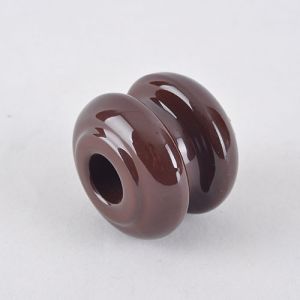
- Crossarms – utility poles conect with horizontal beams known as crossarms. The shackle insulators get support from them.
- Fasteners – these include nuts, and washers used in shackle construction. The shackle insulator is better held to the supporting structure with their help.
- Guy attachment – utility poles can be further reinforced and stabilized with the use of guy wire attachments. Guy wire attachments fasten to keep the guy wires firm.
- Vibration dampers – vibration dammpers reduce the size of wind-induced conductor vibrations. To reduce vibrations and avoid damage, they can install between the shackle insulators.
- Insulator covers – these are a great way to keep the elements from damaging shackle insulators. They aid in keeping the insulators’ electrical performance and lifespan in good shape.
- Spacer dampers – installed along power lines, spacer dampers regulate the movement of wires. Also, to ensure adequate distance, they mitigate vibrations caused by wind.
- Corona discharge – the rings help to lessen the impact of the corona discharge that happens at power line high voltage spots. Corona discharge reduce by placing corona rings in near to the shackle insulators.
The shackle insulator’s properties
There are some reasons why shackle insulators are good electrical insulations. They help make power transmission safe and efficient. Common characteristics of shackle insulators are as follows.
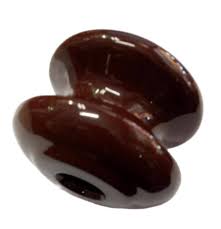
- Materials – insulators are from materials like materials like as glass, polymer, or porcelain. The insulator is unable to conduct electrical current due to these substances. Furthermore, it guarantees the secure transfer of power.
- Corrosion resistance – shackle insulators can endure exposure to water, air pollution, and UV light.
- Dimensional stability—the exact dimensions of shackle insulators provide a fit and alignment. To keep their performance constant under stress, they exhibit minimal dimensional variations.
- Hydrophobic coating – this applies to shackle insulators to repel water and prevent moisture collection. This lessens the possibility of electrical leakage and surface flashover while it’s raining.
- Strength under mechanical stress – insulators help to endure line mechanical loads. Tension and compression are in this. They can withstand the weight of the conductors and other external forces because to their high mechanical strength.
- Thermal stability – insulators need thermal stability for their electrical and mechanical properties. This is to withstand a broad temperature range. They maintain their integrity under extreme heat and cold.
- UV radiation – shackle insulators ought to be resistant to ultraviolet (UV) light. Insulators made of polymer composites may survive sunlight thanks to additives that block UV light.
- Ease of Installation – the low weight of polymer composite shackle insulators makes them convenient for both installation and handling.
Shackle insulator cost comparisons and factors to consider
Shackle insulator’s price vary depending to some industry-wide variables. Everything from materials to production procedures to installation needs consist of this. When choosing the insulators, it is helpful to check these characteristics. Finding a happy medium between initial investment and needs for sustained performance and dependability is also part of this process. The cost of a set of shackle insulators can vary from $5 to $25. A shackle insulator’s price might depending on the following typical variables.
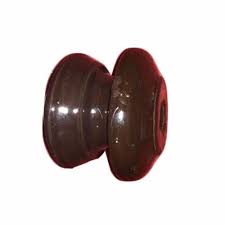
- Material – an inexpensive material with great electrical characteristics is glass and porcelain insulators. Yet, the materials may make them more expensive. Although they are more costly, composite insulators have the advantages of being lighter and requiring less transportation.
- Ease of installation – when compared to porcelain insulators, polymer composite insulators are more manageable. This is due to their smaller weight and ease of installation.
- Resistance to damage – consider the shackle insulators’ long-term performance and reliability. Insulators made of polymer composites are more resilient to damage, earthquakes and dynamic loads.
- Manufacturing process – during the manufacturing process, certain kiln firing procedures are necessary for materials such as glass and porcelain. Both the time and money needed for this might add up. Insulators made of polymer composites can be from either injection molding or pultrusion. These provide production and efficiency cost benefits.
- Maintenance needs – Insulators’ maintenance requirements might affect their total cost of ownership (TCO). To keep surfaces clean and avoid flashover, they may need cleaning on a regular basis.
- Total cost of ownership – think about how much money you’ll spend on the insulator during its estimated lifetime. That’s the total cost of ownership. This may include purchase price, installation cost, maintenance cost, and the cost of any system faults that may occur
The operation of an insulator shackle
Both mechanical support and electrical insulation are part of a shackle insulator’s function. The secure and dependable transfer of power is from this. For electrical systems to function reliably, shackle insulators must be functional. If you want advice on which insulators are ideal, it’s smart to talk to experts. An explanation of the operation of a shackle insulator is as given below.
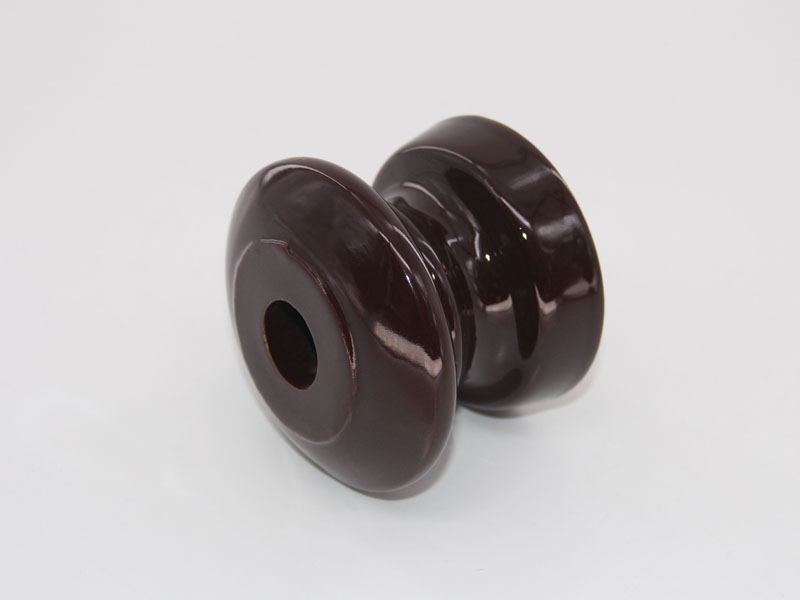
- Mounting – when installed, the shackle insulator fastens to the underlying framework. This is much like the crossarm seen on power poles. Bolts, nuts, and washers fasten the shackle component to the framework that supports it.
- Conductor attachment – the next step is to use a suspension clamp to secure the conductor to the shackle insulator. To account for changes in temperature, this keeps the conductor in place with some wiggle room.
- Electrical insulation – to prevent electrical current from flowing through the conductor and into the supporting structure, insulators are necessary. In doing so, the electrical current cannot leave the conductor and reach the supporting structure.
- Mechanical support – extra mechanical support for the conductor is from the shackle insulators. As a result, the mechanical stresses that the conductor experiences are better distributed. Included in this are stresses caused by the line’s weight and wind.
- Environmental protection – insulators have designs to resist a variety of environmental conditions, providing protection for the environment. Things like humidity, pollution, temperature swings, and ultraviolet light are all part of this. Insulators made of composite materials, glass, or porcelain are resistant to these elements, ensuring their longevity.
- Maintenance – checking in on them at regular intervals is a good way to keep them in good working order in electrical systems. Visual inspections for contamination or damage may be part of this process.
Exploring several testing methods of shackle insulators
There are various methods required for the testing of shackle insulators. This is to guarantee their appropriateness, electrical performance, and integrity. The shackle insulators go through these tests to make sure they are safe, reliable, and work well. Furthermore, conduct routine testing and inspection. This helps to identify problems sooner.
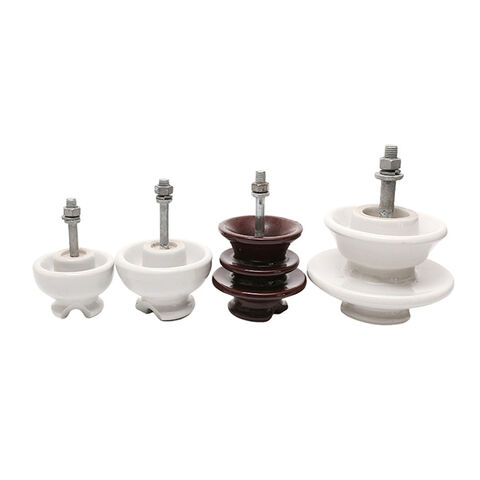
- Visual inspection – examining the shackle insulators visually allows one to gauge their state. Find any deterioration indicators, such as chips, cracks, or surface contaminants.
- Mechanical load testing – one way to ensure that shackle insulators are up to the task is to subject them to mechanical load testing. The insulator subject to the mechanical loads that have been pre-determined.
- Corona testing – checking the corona performance of shackle insulators is part of corona testing, which might result in power loss. Also included are high-voltage tests to see whether the insulator can withstand corona discharge.
- Dimensional checks – verifying the length, diameter, and other important dimensions is part of the dimensional verification process to make sure everything fits together correctly. The results of these tests will tell you whether the shackle insulators are up to code.
- Electrical insulation testing – checking the shackle insulators for electrical integrity is what electrical insulation testing is all about. They undergo high voltage testing to ensure they can endure the required amount of electrical stress. Insulation testing can also be useful for determining the conductor-to-support-structure resistance.
- Environmental testing – this is testing their performance in a variety of natural settings is also known as environmental testing. This includes exposure to highs and lows in temperature, humidity, pollution, and ultraviolet light. This is useful for checking their dependability and longevity in different settings.
Frequently asked questions
For both mechanical and electrical insulation, a shackle insulator is an indispensable tool. It blocks the electrical current from the wire reaching the supporting structure.
Visual, dimensional, check, mechanical load, and electrical insulation tests are common. Quality control throughout production, environmental testing, and corona testing are a few more.
Corona discharge, mechanical damage, electrical failure, contamination, and deterioration are common concerns. To find and fix these faults before they cause difficulties, regular inspections and maintenance are necessary.
